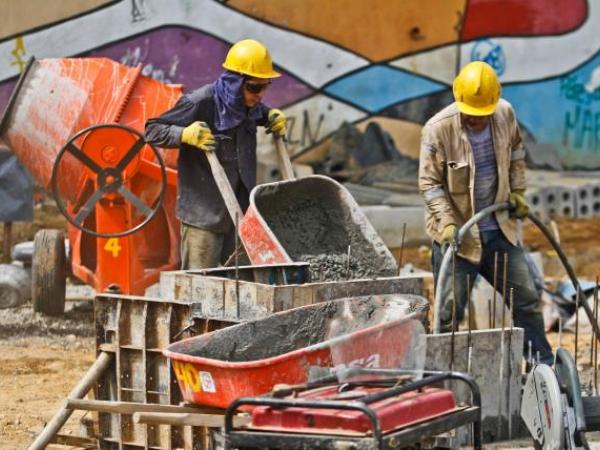The inflation touches all sectors and most of them, which depend on raw materials to make finished products, are seeing their profit margins hurt due to the global economic situation.
(Read: In nine cities, 6.3 million live with inflation greater than 10%).
Inputs rise more and more in price, especially imported ones, due to the accelerated rise of the dollar that has had a increase of $413 in the Colombian context in the last year.
In the case of construction, the different unions have highlighted the effect generated by this situation, highlighting the raw materials, which show annual increases above 50%.
For Sandra Forero, president of Camacol, this cost dynamic is complex for the sector, taking into account that the activity takes place in a context of fixed prices and variable costs.
“That is, in the pre-sale scheme, the builder agrees with the client on the price of the property that will be delivered a few years later, during which time increases in costs can be recorded.”, said Forero, who pointed out that this upward dynamic has been observed since the end of 2020 in various inputs, and they register as the highest in history.
He said that this “affects the budgets made initially. Today we have 350,000 homes that have not started construction yet, and that in this inflationary context their construction budgets were affected”, indicates Forero.
For June of this year, the producer price index (IPP) in the component of materials for the construction grew 14.3% annually, several percentage points above the general inflation of the economy.
To date, for Forero, several inputs that have an important weight in the work budget have cost levels much higher than those seen a year and a half ago.
“This leads to the incorporation of these new cost levels in the planning of project launches that will be carried out soon, with which in the new homes that are put on the market the increase in costs will be reflected in the final price at which the consumer buys”, he stressed.
Now, regarding the increase in the exchange rate, the inflationary pressures, imported products can rise in price considering that Colombia imports most of its inputs.
In this regard, Forero emphasizes that in the case of the construction consumption basket, articles associated with wood, for example, have an imported component of 59%, a similar case with lifting equipment, with 75%; electrical control devices of 68%, and instruments and measuring devices in which 95% of the supply is imported.
Civil works
In the case of civil works, and according to the Cost Index of the Construction of Civil Works (Icociv) of the National Administrative Department of Statistics (Dane), construction materials have been the group of inputs that has suffered the most increases in their prices, for example, from January 2021 to May 2022 the price of the steel has increased by 65.7%, asphalt by 25.7% and cement by 9.8%.
In this regard, Juan Martín Caicedo, president of the Colombian Chamber of Infrastructure (CCI), this increase can be explained by raw materials associated with its production, among which are: energy raw materials (oil, coal), scrap, as well as logistics costs (freight), inflation, the representative market rate and labor.
“It is important to keep in mind that, in public works contracts, these supplies have an impact on the physical scope of the works, that is, the higher the price of the supplies, the fewer kilometers of the works are possible to carry out,” said Caicedo to Portfolio.
The union leader assured that these factors directly affect the prices of construction products. This joins what was said by the president of Camacol, who stressed that “many inputs used by companies in this sector are imported, as well as raw materials for the production of other inputs.”
To this he added that there are also national raw materials that are sold at international prices (in dollars), as is the case of fuels, and that, in response to this market dynamic, also generate an increase in the final prices of the supplies.
“Taking this scenario into account, it is important to point out the role that the contracting entities have in their contractual policies, the formulas for price adjustments, as well as the definition of lists and prices of supplies,” Caicedo recommended.
STEEL, ONE OF THE HIGHEST
In the case of steel, in particular, Camacol has requested the reduction of the tariff from 10% to 0% as a measure to mitigate the increases in the price of this input, which has reached annual increases of over 50% in recent months. In this regard, the Minister of Commerce, Industry and Tourism. María Ximena Lombana assured that prices began to stabilize.
(Also: EU regulations would impact the coffee supply chain).
“In May, the increase in steel prices was 4.3%, a moderate increase compared to that registered in April (close to 28%, compared to January). To the extent that external circumstances dissipate, such as the gradual opening of Chinese cities, international steel prices will slow down.”
PAULA GALEANO BALAGUERA
















